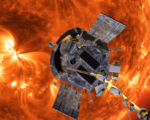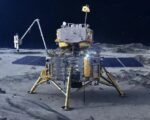Gold-Sulfur Complex Found to Play Crucial Role in Gold Deposit Formation
An international team of scientists has made a groundbreaking discovery that could transform our understanding of gold deposit formation on Earth. Led by Adam Simon, Professor of Earth and Environmental Sciences at the University of Michigan, the study uncovers the crucial role of a gold-sulfur complex in transporting gold from deep within the Earth’s mantle to the surface. The findings, published in Proceedings of the National Academy of Sciences (2024), offer new insights into the conditions under which gold is mobilized and concentrated in Earth’s crust.
The Gold-Trisulfur Complex: A Key to Gold’s Journey
According to the study, gold is transported in the Earth’s mantle in a complex form known as the gold-trisulfur complex. This complex forms under specific temperature and pressure conditions, typically located 30 to 50 miles beneath active volcanic zones. For years, the existence of such a complex was debated, but this research has solidified its role in enriching magma with gold as it rises towards the surface. The discovery also helps explain why certain areas, particularly subduction zones, are particularly rich in gold deposits.
Subduction Zones and Volcanic Activity as Gold Sources
The researchers specifically highlight subduction zones, such as those around the Pacific Ring of Fire, as key regions for gold formation. These areas, known for their high volcanic activity, provide an ideal geological environment for gold to be carried from the mantle to surface deposits through volcanic eruptions. Locations such as New Zealand, Japan, Alaska, and Chile, which lie within these active volcanic regions, are some of the richest in gold, thanks to the unique geological processes at play in subduction zones. The study links volcanic eruptions to the mechanisms that concentrate gold in these zones, shedding light on how gold deposits form in these high-activity areas.
Implications for Gold Mining and Exploration
This new understanding of how gold is transported from deep within the Earth to surface deposits opens up new avenues for gold exploration and mining. By targeting subduction zones with the right conditions for the formation of gold-sulfur complexes, geologists and mining companies can potentially uncover new gold reserves in regions that were previously unexplored. This discovery not only improves our knowledge of the Earth’s processes but also enhances the accuracy and efficiency of gold prospecting in volcanic regions around the world.
















